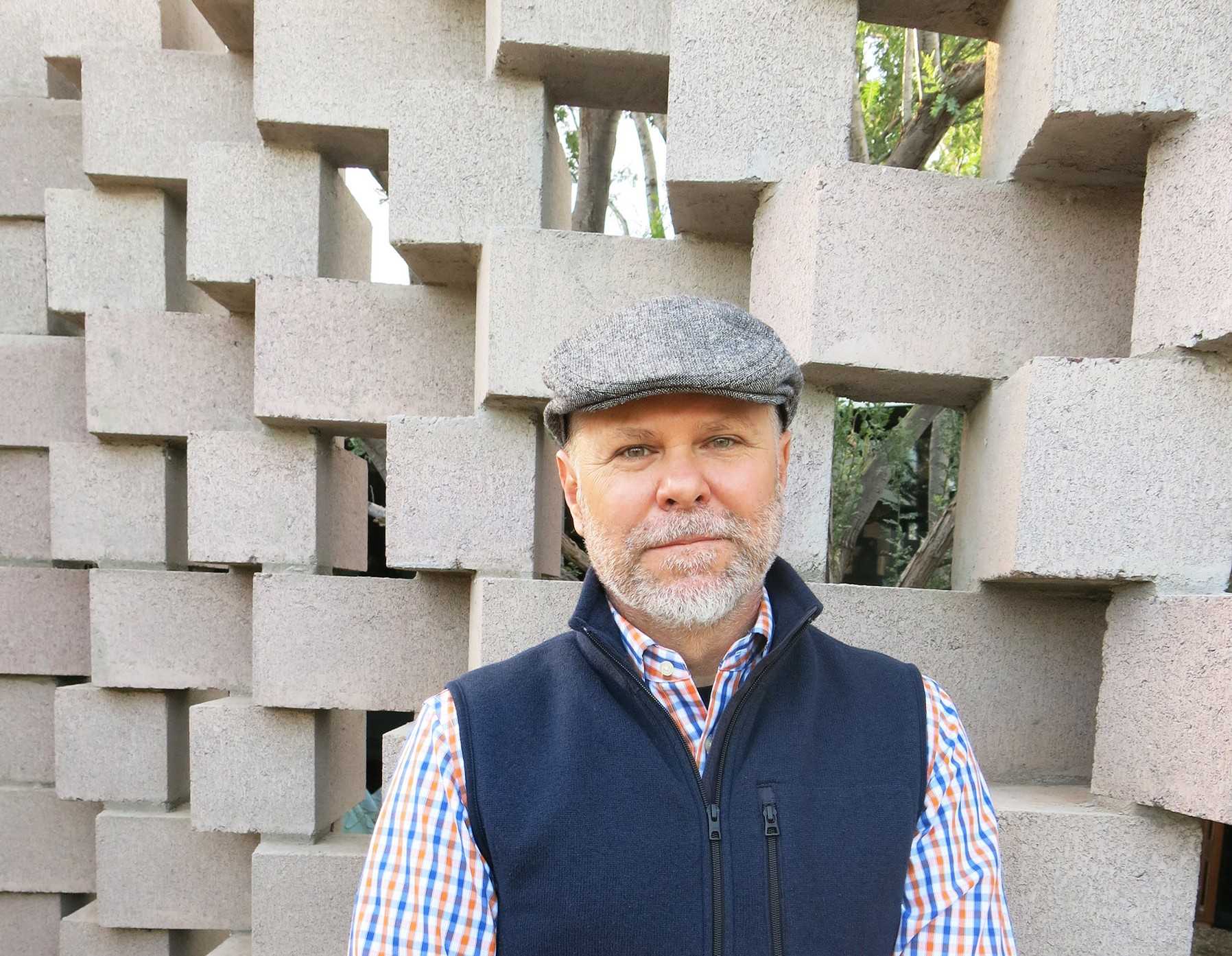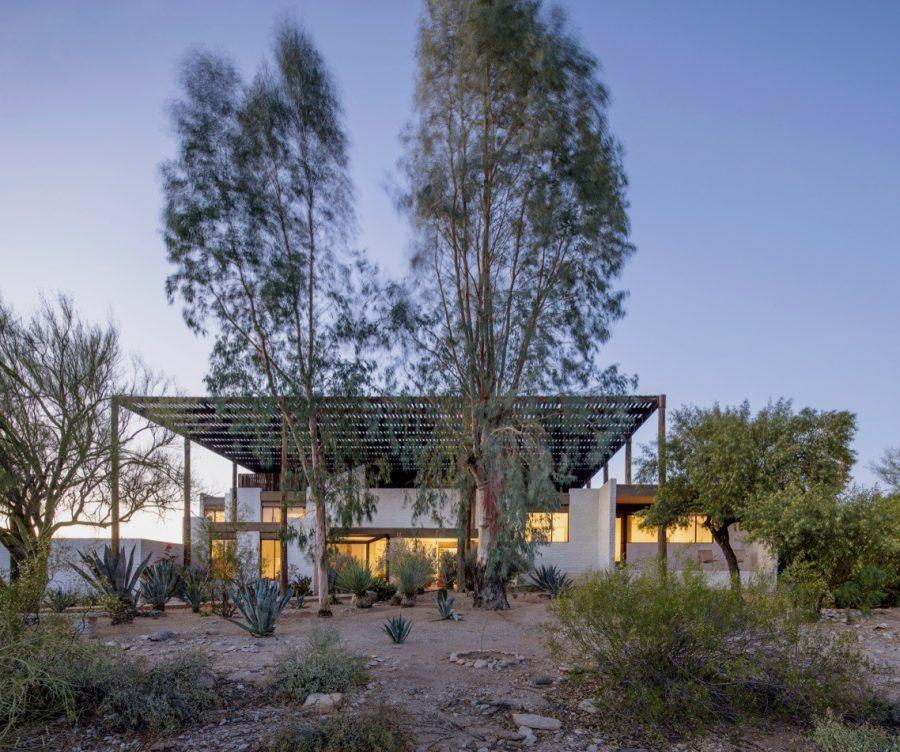Co-authors Christopher Domin, an associate professor of architecture at the University of Arizona, and Kathryn McGuire, a Tucson architect, recently published a book titled “Powerhouse: The Life and Work of Judith Chafee.” The two will be presenting authors at the upcoming Tucson Festival of Books.
The book explores the life and legacy of Chafee, who lived between 1932 and 1998 and was a renowned architect well-known for her modernist residential designs in Tucson and a distinguished UA professor. Domin and McGuire have both led lives that brought them to Chafee independently.

Domin’s previous book, “Paul Rudolph: The Florida Houses,” was inspired by researching a group of houses that responded to a cultural change during the post-World War II era, he explained.
“How can you meaningfully respond to a place or a region if you’re an architect? Through the language of building,” Domin said. “[Rudolph] looked at that idea, which was fascinating to me, so it put me onto a trajectory for my research as an architect.”
After Rudolph finished working in Florida, he became the chair of the Department of Architecture at Yale University, and one of Rudolph’s first graduating students was Chafee, according to Domin.
“I was extremely inspired by Chafee’s work when I learned of her,” Domin said. “Then when I met [McGuire], who had worked for Chafee, we immediately connected. Eventually, the book became our project.”
RELATED: Writing Skills Improvement Program: A worldwide writing resource

Coincidentally, McGuire attended the UA for a second bachelor’s degree in architecture when Chafee was still a UA professor. She graduated in the class of 1980 and went on to work for Chafee for 20 years.
“There were so many layers and segments of working with [Chafee],” McGuire said. “The houses were so amazing, and she would have wonderful parties. She was an inspiring teacher and friend.”
According to Domin, “Powerhouse: The Life and Work of Judith Chafee” highlights how although Chafee’s priorities were apparent in her work, each of her projects have a unique look because she was so receptive to the needs of her clients and the place in which she was working.
“Great artists grapple with the tradition of a place and launch it forward to liberate and expand a culture,” Domin said. “The architect’s role is to determine: ‘How can you leave this place better than you found it?’”
Both Domin and McGuire said that writing “Powerhouse: The Life and Work of Judith Chafee” was a 50-50 split, a partnership in which both parties brought their individual strengths and experiences to the project.
“The book took us almost seven years to finish,” McGuire explained. “We were very fortunate in connecting with the talented photographer Bill Timmerman, that he would take the time to work with us.”
Diana Brock-Gray, a UA alumna, and her friend Jennifer Thomas volunteered as photo assistants for Timmerman’s photo shoots of Chafee’s houses, according to McGuire.
“Even my husband was in our volunteer team,” McGuire said. “There’s a lot of work involved with photographing architecture: working with light, movement, rearranging chairs and paintings, all to capture the buildings.”
Currently, Domin said he is most excited about the traveling exhibit that he and McGuire are co-curators of, called “Judith Chafee: Framing the Desert.” The show features architectural photographs of Chafee’s work by Timmerman and architectural models by Trevor Cordivari.
RELATED: How dual-language picture books preserve and diversify culture
“Here in the college, I am currently working with a group of capstone students on their undergraduate thesis projects,” Domin said. “How that next generation manifests priorities that you see in the work of this community, or in Judith Chafee’s work, is fascinating.”
At the Tucson Festival of Books, Domin and McGuire will participate in a conversation called “Powerhouse: Judith Chafee” on Saturday, March 14, at 2:30 p.m.
“We really value our authors that are part of the University of Arizona community,” said Melanie Morgan, the festival’s executive director, in an email. “These participants add so much richness to the festival.”
McGuire said she remembers when the Tucson Festival of Books first started. This will be her first time presenting rather than attending.
“It’s a wonderful experience,” McGuire said. “It’s such a great event that celebrates books, especially now that everything is all on computers — and it’s free.”
For the UA, Tucson community and architects across the world, “Powerhouse: The Life and Work of Judith Chafee” is a profound new piece in the published literature world. It could be shelved in many sections of a bookstore, from biography to photography to the architecture section; the book is as multifaceted as Chafee herself, according to Domin.
“Architecture comes out of a community,” Domin said. “It’s not just about a client or just about a building or just about an architect, but it takes an interconnected web of skills, talents and interests to make meaningful work. There is this sensibility that is shared between all of Chafee’s work.”
Follow Sunday Holland on Twitter















